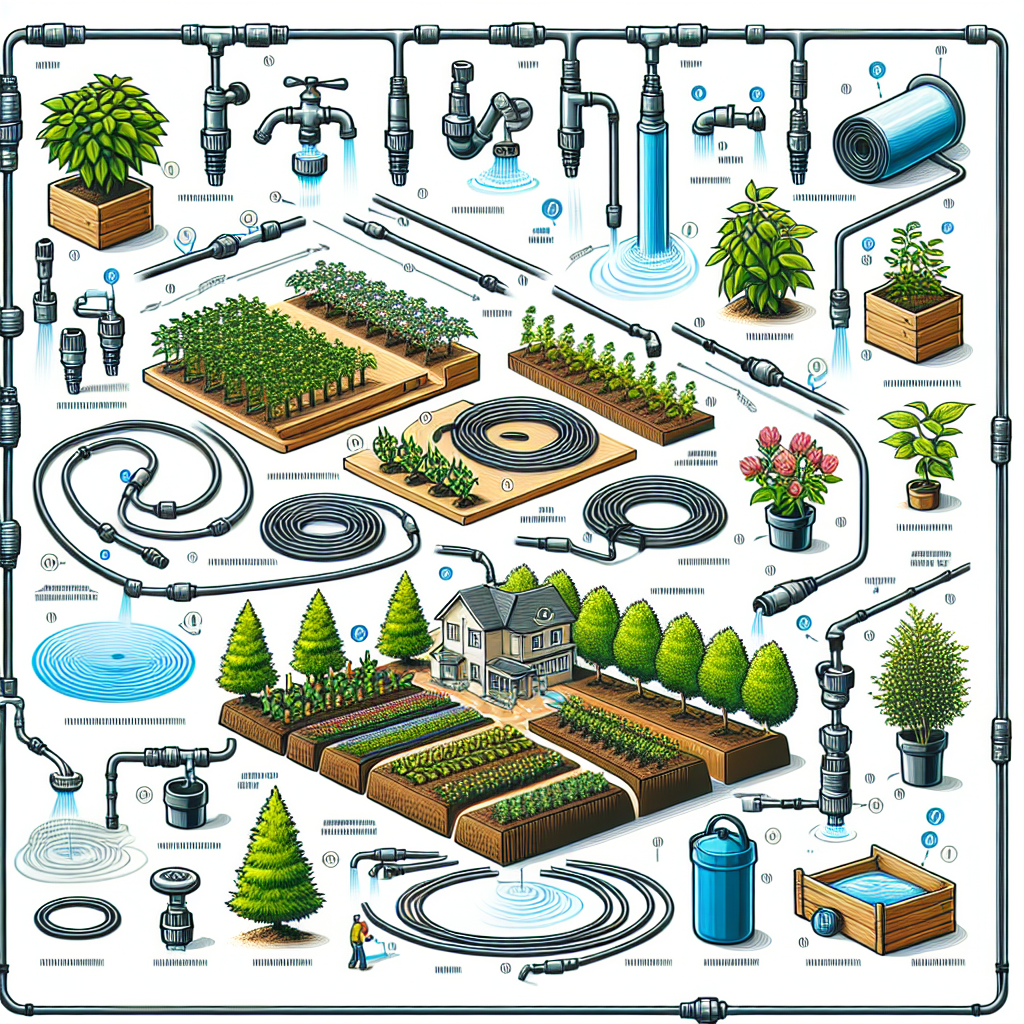Introduction
Irrigation is a crucial aspect of gardening and farming, ensuring that plants receive the right amount of water to thrive. One popular method of irrigation is the slow drip system, which provides water to plants slowly and directly at their roots. This not only conserves water but also promotes healthier plant growth by preventing over-watering or under-watering. In this guide, we will discuss the benefits of slow drip irrigation systems and provide step-by-step instructions on how to set one up in your garden.
Benefits of Slow Drip Irrigation Systems
1. Water Conservation: Slow drip systems use significantly less water than traditional sprinkler systems, as water is delivered directly to the roots where it is needed most. This reduces wastage from evaporation and runoff, making it an environmentally-friendly option for watering your plants.
2. Prevents Disease: By watering plants at their roots, slow drip systems help prevent moisture-related diseases such as root rot and powdery mildew. The controlled flow of water also reduces humidity levels around the plants, further reducing the risk of disease.
3. Saves Time and Effort: Once set up, slow drip systems require minimal maintenance and can be automated with timers or sensors. This eliminates the need for manual watering, saving you time and effort in the long run.
4. Promotes Healthy Plant Growth: By providing a consistent supply of water directly to the roots, slow drip irrigation encourages deep root growth and helps plants develop stronger root systems. This leads to healthier plants that are more resilient to drought and other environmental stressors.
5. Customizable Watering: Slow drip systems can be easily customized to meet the specific needs of different plant types or areas within your garden. You can adjust the flow rate, placement of emitters, and watering schedule to ensure that each plant receives the right amount of water.
Setting Up a Slow Drip Irrigation System
1. Plan Your System: Before installing a slow drip system, take some time to plan out the layout of your garden and determine where you want to place your emitters or tubing. Consider factors such as plant spacing, soil type, sun exposure, and water requirements when designing your system.
2. Gather Supplies: To set up a slow drip irrigation system, you will need a few key supplies including:
– Drip tubing or soaker hose: This will be used to deliver water directly to your plants.
– Emitters or drippers: These devices regulate the flow of water from the tubing to each individual plant.
– Connectors and fittings: These will help you assemble your system and connect it to a water source.
– Timer or sensor (optional): To automate your watering schedule.
3. Install Your System: Start by laying out your tubing or soaker hose along the rows or beds where you want to irrigate. Use stakes or anchors to secure the tubing in place and prevent it from moving around.
4. Install Emitters: Place emitters or drippers at regular intervals along the tubing, positioning them near each plant’s root zone for optimal watering efficiency.
5.Connect Your System: Once all emitters are in place, connect your tubing to a water source using connectors or fittings. You may also wantto install a filter or pressure regulator if neededto ensure consistent flow throughout your system.
6.Test Your Systemand Adjust Flow Rate: Turn on your water sourceand check for any leaksor clogs inyour system.Adjustthe flow rate as neededby manipulatingthe valves onyour emitters until eachplantreceivesa steady streamofwater withoutwasteor runoff.
7.AutomateYour System (optional): Ifyou choose toyour system,you can install atimeror sensor thatwill automaticallyturnyourwatering accordingtoa scheduleor basedonsoil moisture levels.Thiswill helpyoumaintainconsistent wateringwhile saving youtimeand effortinthe longrun.
Conclusion
Slowdrip irrigation systemsarean effectiveandsustainable wayto provideplantswiththerightamountofwater they needto thrive.Inthisguide,wediscussedthebenefitsofslowdripsystems,suchaswater conservation,disease prevention,andhealthyplantgrowth.Asimplestep-by-stepprocesswasprovidedonhowto setupa slowsysteminyour gardenfrom planningand gathering supplies topinstallingemittersandconnectingthesystemtoa watersource.Byfollowingtheseinstructions,youcan createa customizablesystemthat deliverswater efficientlyandsavesyou timeand effortinmaintainingyour garden’s healthandsustainability.













